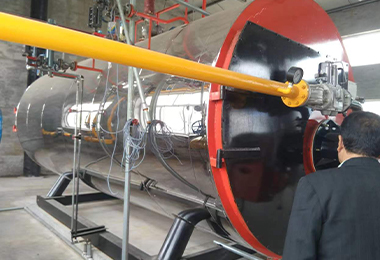
Nov . 12, 2024 04:55 Back to list
how to build a boiler for a steam engine
How to Build a Boiler for a Steam Engine
Building a boiler for a steam engine is an exciting and rewarding project that combines principles of engineering, thermodynamics, and craftsmanship. A properly constructed boiler is crucial for the efficient operation of a steam engine, as it generates the steam necessary for powering the engine. This article will guide you through the essential steps in building a simple boiler designed to withstand high pressure and deliver steam reliably.
Step 1 Understanding Boiler Requirements
Before you begin construction, it's essential to understand the basic requirements of a boiler. Your boiler will need to be made from materials that can handle high pressures and temperatures. Common materials include steel and copper, which have good strength-to-weight ratios and heat conductivity. Additionally, it’s vital to ensure that the design meets safety regulations and standards, preventing any potential hazards.
Step 2 Design the Boiler
A simple boiler for a steam engine typically consists of a water tank, heating elements (like a burner or electrical heating elements), and a chimney for exhaust. The design should include
- Water Tank This is the main body of the boiler where water will be heated to produce steam. It's important to calculate the water capacity based on the size of your steam engine and the amount of steam required.
- Heating Source Decide whether you want to use a gas burner or an electric heater. Each has its pros and cons, but the selection largely depends on the availability of resources and your specific requirements.
- Pressure Relief Valve To ensure safety, incorporate a pressure relief valve into your design. This valve will open if the pressure exceeds a predetermined level, preventing explosions.
- Insulation Insulating the boiler will help maintain the temperature and efficiency of your steam production. Good insulation materials include ceramic fiber blankets or mineral wool.
Step 3 Gather Materials and Tools
Once your design is ready, gather the necessary materials. Here’s a list to help you get started
- Steel or copper sheets for the boiler body - A suitable heating element (gas burner or electrical) - Pressure relief valve - Insulation material - Welding or soldering equipment - Various hand tools (screwdrivers, wrenches, etc.) - Safety gear (goggles, gloves, etc.)
how to build a boiler for a steam engine

Step 4 Construct the Boiler
1. Fabricate the Boiler Body Begin by cutting the steel or copper sheets into the necessary shapes as per your design. Use welding or soldering techniques to join the sheets, ensuring all joints are airtight.
2. Install the Heating Element Depending on your choice of heating source, securely mount the burner or electrical heater to the appropriate location on the boiler.
3. Install the Pressure Relief Valve Attach the pressure relief valve to the boiler in a position where it can easily vent steam if needed. Make sure it’s easily accessible for maintenance and testing.
4. Insulate the Boiler Wrap the boiler body with your chosen insulation material, ensuring that it covers all exposed surfaces adequately. This will help retain heat and enhance efficiency.
Step 5 Testing and Safety Checks
Before using your boiler, conduct thorough testing to ensure it operates safely and efficiently
- Leak Test Fill the boiler with water and pressurize it (without heating) to check for any leaks in the joints and fittings.
- Pressure Adjustment Verify that the pressure relief valve functions correctly by gradually increasing pressure and ensuring it opens at the set limit.
- Temperature Checks Once you begin heating the water, monitor the temperature and pressure regularly.
Conclusion
Building a boiler for a steam engine takes time and attention to detail, but with careful planning and execution, you can create a functional and efficient unit. Always prioritize safety and adhere to local regulations, as working with pressurized systems can pose significant risks. With the right approach, your boiler will serve as a reliable source of steam, bringing your steam engine to life and adding joy to your engineering endeavors.
-
High-Efficiency Commercial Oil Fired Steam Boiler for Industry
NewsJul.30,2025
-
High-Efficiency Biomass Fired Thermal Oil Boiler Solutions
NewsJul.30,2025
-
High Efficiency Gas Fired Thermal Oil Boiler for Industrial Heating
NewsJul.29,2025
-
High-Efficiency Gas Fired Hot Water Boiler for Sale – Reliable & Affordable
NewsJul.29,2025
-
High Efficiency Biomass Fired Hot Water Boiler for Industrial and Commercial Use
NewsJul.29,2025
-
High-Efficiency Biomass Fired Hot Water Boiler for Industrial Use
NewsJul.28,2025
Related PRODUCTS






















